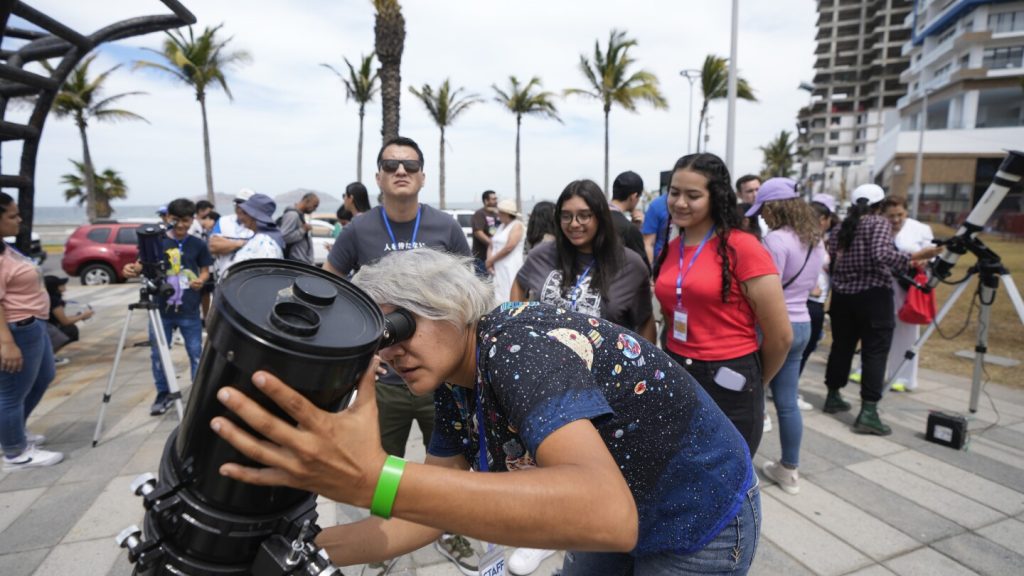On Monday, a total eclipse of the sun was set to occur, drawing millions of spectators along a corridor from Mexico to the U.S. to Canada. Despite forecasts predicting clouds, the best weather conditions were expected at the end of the eclipse in Vermont, Maine, New Brunswick, and Newfoundland. This eclipse was anticipated to be the largest crowd for North America, with over four minutes of midday darkness in Texas and other prime locations. It was also noted that almost everyone in North America would witness at least a partial eclipse, weather permitting.
Weather forecasters mentioned that cloud cover was difficult to predict, but regardless of the weather conditions, people were excited to share the experience with others. The eclipse was expected to create a twilight effect, with only the sun’s outer atmosphere visible, causing birds and animals to fall silent. The duration of darkness during the eclipse was estimated to be up to 4 minutes and 28 seconds, which was longer than previous eclipses due to the moon’s closer proximity to Earth. It was also mentioned that the next total solar eclipse of this magnitude in the U.S. was not expected for another 21 years.
The eclipse’s path started in the Pacific and made its way across Mexico, Texas, Oklahoma, Arkansas, several U.S. states, and Canada before concluding in Newfoundland. The moon’s shadow was set to travel over 4,000 miles in just 1 hour and 40 minutes. It was emphasized that eye protection, such as eclipse glasses and filters, was essential when viewing the sun, except during the moments when it was completely covered during the eclipse. The path of totality encompassed major cities such as Dallas, Indianapolis, Cleveland, Buffalo, and Montreal, with an estimated 44 million people living within the track and hundreds of millions more within 200 miles.
Hotels and flights were sold out, and roads were congested as the excitement surrounding the eclipse attracted eclipse chasers, amateur astronomers, scientists, and curious individuals. Experts from NASA and various universities were stationed along the route to conduct research and experiments, including launching research rockets and weather balloons. Even the International Space Station’s astronauts at an altitude of 270 miles were prepared to observe the eclipse. The article concluded by stating that the Associated Press Health and Science Department receives support from the Howard Hughes Medical Institute’s Science and Educational Media Group, with the AP being responsible for all content.


